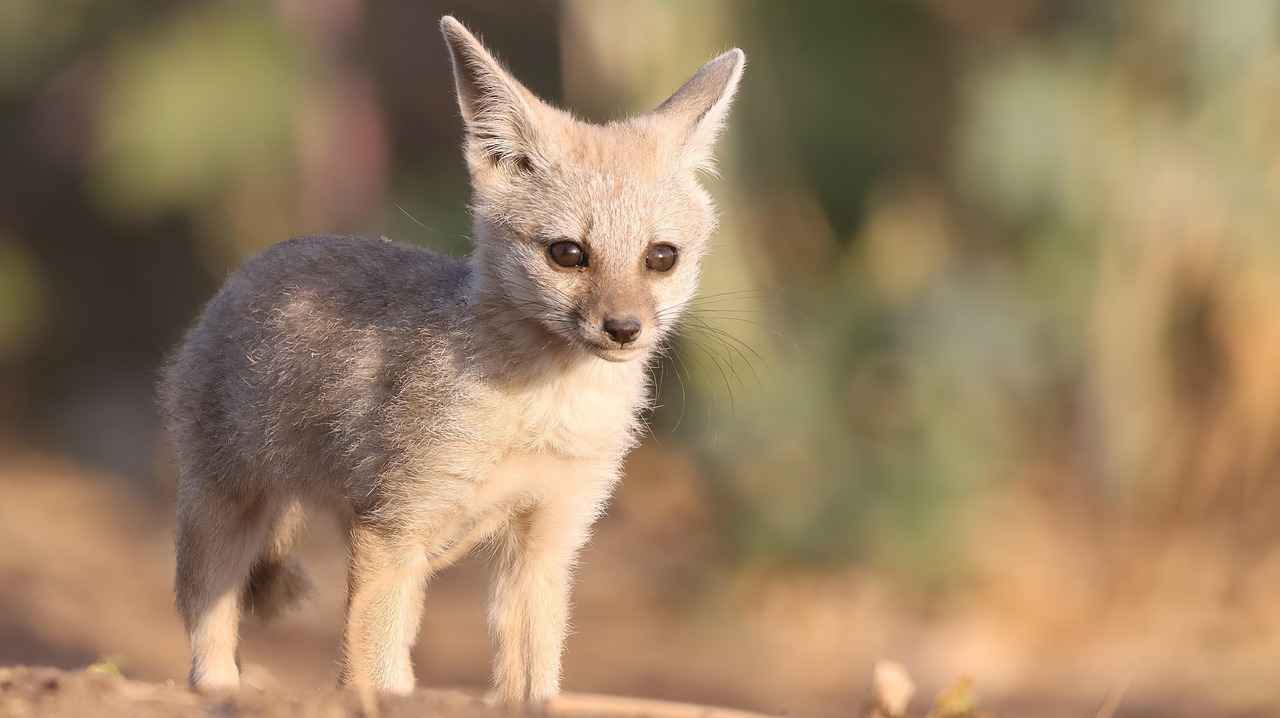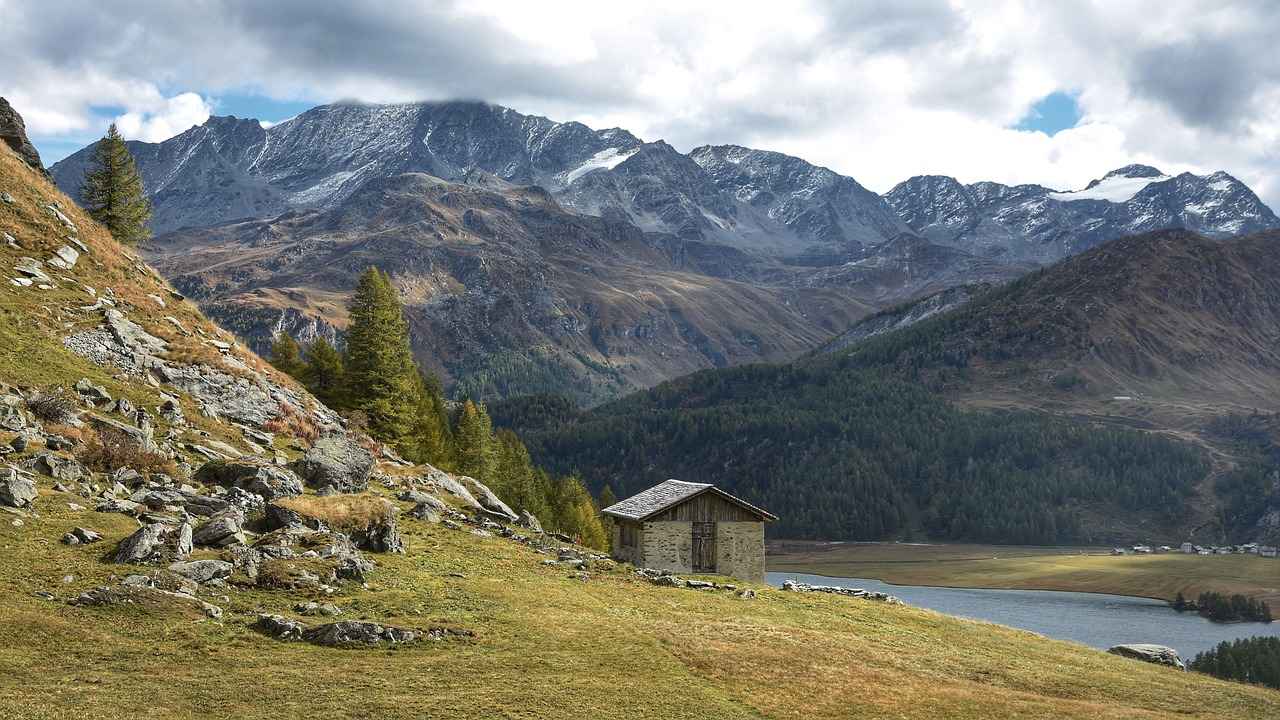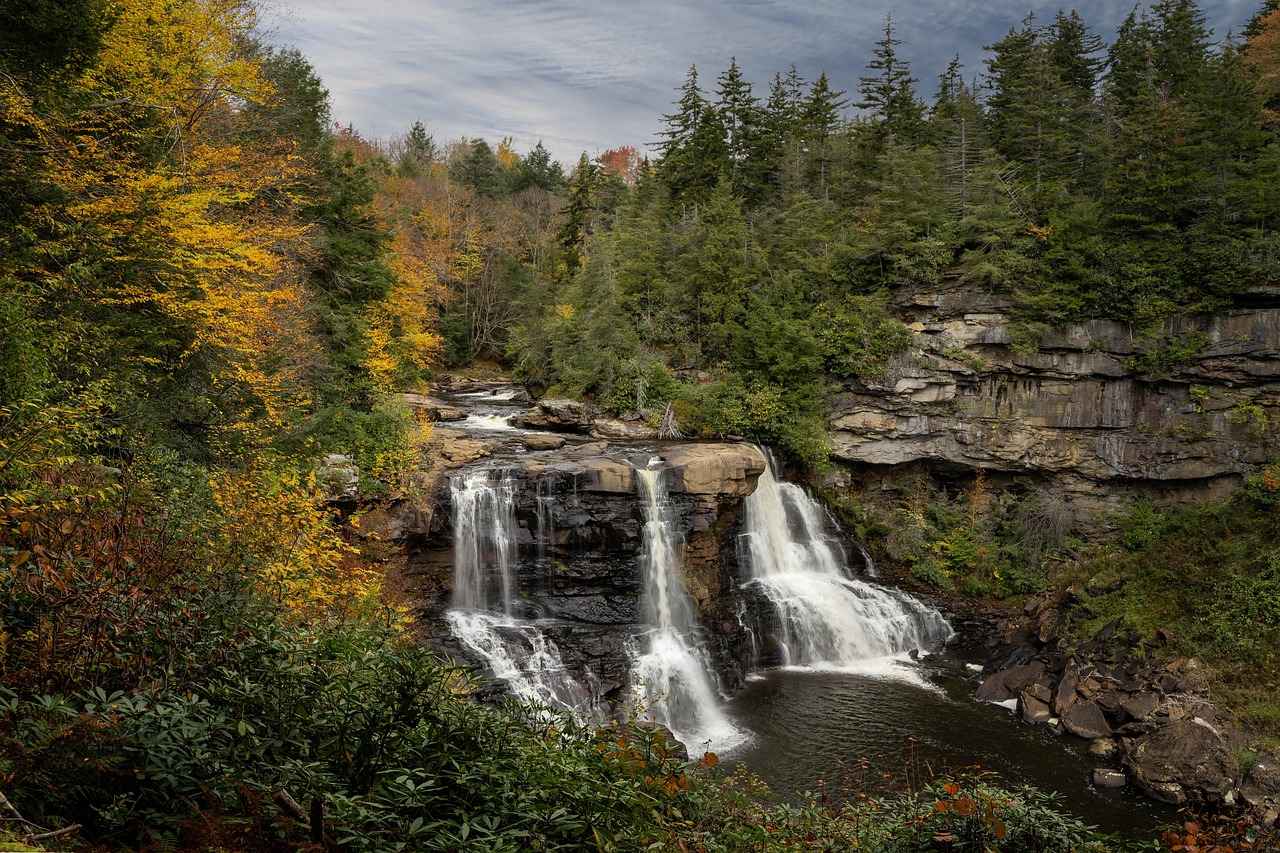This article delves into the top eco-tourism destinations in West Bengal, showcasing their unique features, rich biodiversity, and sustainable practices that make them essential visits for nature enthusiasts.
- Sundarbans National Park: A UNESCO World Heritage Site, this park is famous for its sprawling mangrove forests and is home to the elusive Royal Bengal Tiger. The unique ecosystem supports a variety of wildlife, making it a must-see for eco-tourists.
- Buxa Tiger Reserve: This reserve is not only a haven for wildlife but also offers breathtaking landscapes. It is home to elephants, leopards, and over 300 species of birds, making it a paradise for bird watchers and nature lovers alike.
- Gorumara National Park: Known for its scenic beauty, Gorumara is particularly famous for its population of Indian rhinoceroses. Visitors can enjoy jeep safaris and elephant rides, providing a unique perspective on the park’s wildlife.
- Neora Valley National Park: Often regarded as a hidden gem, this park is perfect for trekking and nature walks, featuring lush landscapes and a rich variety of flora and fauna.
- Kalimpong Eco Park: This park promotes sustainable tourism practices and features beautifully landscaped gardens that showcase native plants, making it an educational experience for visitors.
- Jorpokhri Wildlife Sanctuary: A tranquil haven, this sanctuary features a picturesque lake that supports diverse aquatic life and migratory birds, ideal for peaceful retreats.
- Dooars Region: Known for its lush tea gardens and dense forests, the Dooars region offers a unique blend of eco-tourism and cultural experiences, allowing visitors to engage with local communities.
- Chandraketugarh: This archaeological site combines history with eco-tourism, showcasing ancient ruins while promoting sustainable tourism to preserve its ecological and historical significance.
- Sunderbans Eco Village: Here, visitors can immerse themselves in local culture while enjoying eco-tourism practices that benefit the community.
- Mirik Lake: A serene destination surrounded by lush hills, Mirik Lake offers boating activities and opportunities for nature photography.
- Lataguri: Acting as a gateway to Gorumara National Park, Lataguri offers eco-friendly accommodations and guided wildlife spotting tours.
- Bibhuti Bhushan Wildlife Sanctuary: This lesser-known sanctuary is a treasure trove of biodiversity, playing a crucial role in wildlife conservation while engaging visitors in educational programs.
Conclusion: West Bengal is rich in eco-tourism opportunities, with each destination offering unique experiences that promote sustainability and conservation. Whether you’re a wildlife enthusiast or simply looking to connect with nature, these spots are sure to provide unforgettable memories.

1. Sundarbans National Park
Sundarbans National Park is a remarkable UNESCO World Heritage Site located in the southern part of West Bengal, India. This unique park is famous for its extensive mangrove forests and rich biodiversity, making it a vital ecological zone. The park is home to the majestic Royal Bengal Tiger, which is one of its most iconic residents. The Sundarbans ecosystem is not only crucial for wildlife but also serves as a natural barrier against coastal erosion and flooding.
The park covers an area of approximately 1,330 square kilometers, featuring a complex network of tidal waterways, mudflats, and small islands. The unique geography of the Sundarbans supports a variety of flora and fauna, including numerous species of fish, birds, and reptiles. Among its diverse wildlife, the park is also home to the endangered Ganges River dolphin, saltwater crocodiles, and various species of deer.
| Wildlife Species | Conservation Status |
|---|---|
| Royal Bengal Tiger | Endangered |
| Ganges River Dolphin | Endangered |
| Saltwater Crocodile | Vulnerable |
Visitors to Sundarbans National Park can engage in various eco-tourism activities, such as boat safaris, which allow for close encounters with wildlife in their natural habitat. These safaris are not only thrilling but also provide opportunities for birdwatching, with over 300 species of birds recorded in the region. The park’s unique ecosystem plays a crucial role in preserving the environment and promoting sustainable tourism.
In conclusion, Sundarbans National Park stands out as a premier eco-tourism destination in West Bengal. Its unparalleled natural beauty, combined with its rich wildlife and conservation efforts, makes it a must-visit for nature enthusiasts and wildlife lovers alike.

2. Buxa Tiger Reserve
Buxa Tiger Reserve is a hidden gem nestled in the foothills of the Himalayas, offering a spectacular blend of rich biodiversity and breathtaking landscapes. This reserve is a sanctuary for wildlife enthusiasts and trekkers, providing a unique opportunity to immerse oneself in nature’s beauty.
The reserve spans over 760 square kilometers and is characterized by its dense forests, rolling hills, and vibrant flora. Visitors are greeted with a stunning array of landscapes, from lush green valleys to steep mountain terrains. The diverse ecosystems within the reserve support a variety of wildlife, making it a prime location for nature lovers.
| Wildlife Species | Habitat |
|---|---|
| Royal Bengal Tiger | Forests and Grasslands |
| Asian Elephant | Dense Forests |
| Leopard | Hilly Areas |
| Bird Species | Various Habitats |
One of the most remarkable features of Buxa Tiger Reserve is its avian diversity. With over 300 species of birds recorded, it attracts birdwatchers from around the globe. From the magnificent Hornbill to the elusive Great Indian Horned Owl, the reserve provides ample opportunities for birdwatching enthusiasts to observe these magnificent creatures in their natural habitat.
In addition to birdwatching, the reserve offers numerous trekking trails that cater to adventurers of all skill levels. These trails wind through dense forests and along the banks of pristine rivers, providing trekkers with a chance to experience the area’s natural beauty up close. The treks often lead to breathtaking viewpoints, where visitors can enjoy panoramic views of the surrounding landscapes.
To enhance the experience, the reserve also promotes eco-friendly tourism practices. Local communities are involved in conservation efforts, ensuring that tourism benefits both the environment and the local population. This commitment to sustainability makes Buxa Tiger Reserve not only a destination for adventure but also a model for responsible tourism.
In conclusion, Buxa Tiger Reserve stands out as a premier destination for those seeking to explore the rich biodiversity and stunning landscapes of West Bengal. Whether you’re a wildlife enthusiast, a passionate trekker, or simply someone looking to connect with nature, Buxa offers an unforgettable experience that resonates with the heart of eco-tourism.
Wildlife Diversity
is a captivating aspect of nature reserves, particularly in areas like the Buxa Tiger Reserve. This reserve is a sanctuary for an array of wildlife, making it a prime destination for nature enthusiasts and wildlife observers alike. The rich biodiversity here includes majestic elephants, elusive leopards, and a multitude of bird species, each contributing to the vibrant ecosystem.
The presence of these species not only enhances the ecological balance but also offers visitors a chance to witness the beauty of wildlife in its natural habitat. The reserve is particularly known for its diverse mammal population, which includes:
- Indian Bison – A robust herbivore often spotted grazing in the grasslands.
- Wild Boar – Commonly seen foraging in the underbrush.
- Various Deer Species – Such as the Sambar and Barking Deer, adding to the reserve’s charm.
Birdwatchers will find Buxa a paradise, with over 300 species documented. Some notable birds include:
- Great Hornbill – Known for its striking appearance and loud calls.
- Indian Pitta – A colorful bird that attracts many birdwatchers.
- Black Eagle – A majestic raptor often seen soaring above the treetops.
In addition to mammals and birds, the reserve is home to a variety of reptiles and amphibians, making it a biodiversity hotspot. The combination of tropical and subtropical forests creates a unique habitat that supports this vast array of life. Visitors can engage in wildlife observation activities, enhancing their experience and understanding of the delicate ecological balance.
Overall, Buxa Tiger Reserve is not just a place for wildlife observation; it is a critical area for conservation efforts. By visiting, you contribute to the preservation of these species and their habitats, ensuring that future generations can also enjoy the wonders of nature.
Bird Watching
Buxa Tiger Reserve is not just a haven for wildlife enthusiasts; it is truly a birdwatcher’s paradise. With over 300 species of birds recorded, it attracts both amateur and professional bird watchers from all around the world throughout the year. The diverse habitats within the reserve, including dense forests, grasslands, and rivers, contribute to this remarkable avian diversity.
The rich biodiversity of Buxa makes it an exceptional location for observing various bird species. From the majestic White-bellied Sea Eagle to the vibrant Indian Pitta, birdwatchers can encounter a wide range of feathered friends. The best time to visit for birdwatching is during the migratory season, when many species flock to the area, making it a vibrant spectacle of colors and sounds.
Additionally, the reserve offers guided birdwatching tours that provide expert insights into the behavior and habitats of the birds. These tours not only enhance the birdwatching experience but also educate visitors about the importance of conservation efforts in preserving these species and their habitats.
Moreover, the serene environment of Buxa adds to the overall experience, allowing birdwatchers to immerse themselves in nature while enjoying the thrill of spotting elusive species. Whether you are a seasoned birdwatcher or a curious beginner, Buxa Tiger Reserve promises an unforgettable adventure.
In conclusion, Buxa is more than just a wildlife reserve; it is a sanctuary for bird lovers, offering opportunities to witness the beauty of nature in its finest form. With its rich avian diversity and commitment to conservation, Buxa Tiger Reserve stands out as a must-visit destination for anyone passionate about birds.
Flora and Fauna
The Buxa Tiger Reserve is a remarkable sanctuary that showcases a stunning mix of tropical and subtropical forests. This unique blend of ecosystems plays a vital role in supporting an extensive variety of plant and animal life, which is crucial for maintaining the ecological balance in the region.
The reserve covers a vast area and is characterized by its diverse vegetation, including towering trees, dense underbrush, and vibrant flowering plants. This rich flora provides essential habitats for numerous species, contributing to the area’s overall biodiversity. Among the notable plant species, you can find medicinal herbs, towering sal trees, and various ferns that thrive in the moist, shaded environments.
In addition to the lush vegetation, the Buxa Tiger Reserve is home to a wide range of wildlife. Visitors may encounter majestic Royal Bengal Tigers, playful elephants, elusive leopards, and a plethora of bird species. The reserve is particularly famous for its avian population, with over 300 species recorded, making it a paradise for bird watchers and nature enthusiasts alike.
Furthermore, the rich biodiversity of the reserve is not only essential for ecological balance but also serves as a critical resource for local communities. Sustainable practices implemented in the area help preserve these natural habitats while allowing for responsible tourism, which benefits both the environment and the local economy.
In conclusion, the Buxa Tiger Reserve stands as a testament to the importance of preserving in our ecosystems. By visiting this incredible reserve, tourists can witness firsthand the beauty and diversity of nature while supporting conservation efforts aimed at protecting these invaluable resources for future generations.
Adventure Activities
in West Bengal’s eco-tourism spots offer a thrilling way to connect with nature while indulging in various outdoor pursuits. Visitors can immerse themselves in the breathtaking landscapes through a range of exhilarating activities designed to enhance their experience.
One of the most popular activities is trekking, which allows adventurers to traverse through dense forests, rolling hills, and scenic trails. Each trek offers a unique opportunity to witness the diverse flora and fauna of the region. For instance, the trails in Neora Valley National Park provide stunning views and encounters with rare wildlife.
River rafting is another exciting option, especially in areas like the Dooars region. The swift currents of the rivers here provide an adrenaline-pumping experience, perfect for both beginners and seasoned rafters. Rafting expeditions often include guides who ensure safety while sharing insights about the surrounding ecology.
Camping under the stars is a must-try for those looking to fully embrace nature. Eco-friendly campsites are set up in various locations, such as the Sundarbans and Gorumara National Park, where visitors can enjoy the sounds of wildlife at night and the beauty of sunrise in the morning. These camps often provide basic amenities while promoting sustainable practices.
Moreover, engaging in bird watching and nature walks adds a peaceful element to the adventure. With over 300 species of birds in Buxa Tiger Reserve, enthusiasts can spend hours observing and photographing these beautiful creatures.
In conclusion, the adventure activities available in West Bengal’s eco-tourism spots not only cater to thrill-seekers but also foster a deeper appreciation for nature. Whether it’s trekking, river rafting, or camping, each experience is designed to create lasting memories while promoting ecological awareness.

3. Gorumara National Park
Gorumara National Park is a stunning natural reserve located in the northern part of West Bengal, India. This park is not only a haven for wildlife enthusiasts but also a perfect getaway for nature lovers seeking tranquility amidst lush greenery. With its diverse ecosystems, Gorumara is renowned for its rich biodiversity, particularly the majestic Indian rhinoceros, which is a key attraction for visitors.
The park spans over 79 square kilometers and is characterized by a mix of dense forests, grasslands, and riverine vegetation. This variety of habitats supports a wide range of flora and fauna, making it an ideal spot for eco-tourism. Apart from the Indian rhinoceros, Gorumara is home to several other species, including elephants, leopards, and numerous birds, which enhances its appeal for wildlife watchers.
The park’s vegetation is a blend of tropical and subtropical forests, featuring a rich array of plant species. The diverse flora not only contributes to the scenic beauty of Gorumara but also plays a vital role in supporting the park’s wildlife. Visitors can explore various trails that showcase the unique plant life while enjoying the serene environment.
One of the highlights of visiting Gorumara National Park is the opportunity to embark on thrilling jeep safaris and elephant rides. These experiences allow visitors to navigate through the park’s landscapes and observe wildlife in their natural habitat. Guided tours are available, ensuring that you gain insights into the park’s ecology and the importance of conservation efforts.
- Best Time to Visit: The ideal time to explore Gorumara is between November and March when the weather is pleasant.
- Accommodation: There are various eco-friendly lodges and resorts available near the park, providing comfortable stays for tourists.
- Activities: Apart from safaris, visitors can enjoy bird watching, nature walks, and photography, making it a well-rounded eco-tourism destination.
In conclusion, Gorumara National Park stands out as a premier eco-tourism destination in West Bengal, offering a unique blend of adventure and nature appreciation. With its rich wildlife, stunning landscapes, and commitment to conservation, it is a must-visit for anyone looking to immerse themselves in the beauty of the natural world.
Flora of Gorumara
Gorumara National Park, nestled in the heart of West Bengal, is a sanctuary of rich biodiversity and stunning natural beauty. The park’s flora is a vibrant tapestry that includes a variety of ecosystems, from dense forests to expansive grasslands, each contributing to the ecological richness of the area.
The park is primarily covered by mixed deciduous forests, which are home to a myriad of plant species. These forests are characterized by towering trees such as sal, teak, and Mahua, which provide essential habitats for numerous wildlife species. The undergrowth is equally diverse, featuring shrubs and medicinal plants that play a vital role in the local ecosystem.
| Plant Type | Common Species | Ecological Importance |
|---|---|---|
| Tree | Sal, Teak, Mahua | Provide habitat and food for wildlife |
| Shrub | Wild Berries, Bamboo | Support various bird species and promote soil health |
| Herb | Medicinal Plants | Used in traditional medicine and support biodiversity |
In addition to the forests, the park features extensive grasslands that are critical for grazing animals and provide a unique habitat for various bird species. These grasslands are often dotted with flowering plants, which not only enhance the park’s aesthetic appeal but also support pollinators like bees and butterflies.
Moreover, Gorumara’s flora plays a crucial role in maintaining ecological balance. The diverse plant life aids in soil conservation, regulates water cycles, and contributes to the overall health of the environment. As visitors explore the park, they are treated to a visual feast of colors and textures, making Gorumara a true haven for nature lovers.
In conclusion, the flora of Gorumara National Park is not just a backdrop but a vital component of its ecosystem. The park’s diverse vegetation not only enhances its beauty but also supports a wide range of wildlife, making it an essential destination for eco-tourism and conservation efforts.
Safari Experiences
in Gorumara National Park are an adventure unlike any other, offering visitors a chance to immerse themselves in the stunning wildlife and breathtaking landscapes of this remarkable destination. As you traverse the park, you will encounter a variety of ecosystems, from dense forests to lush grasslands, each teeming with life.
One of the most popular ways to explore the park is through jeep safaris. These guided tours provide an exhilarating experience, allowing visitors to cover more ground and spot wildlife that may be elusive on foot. With expert guides leading the way, you can learn about the park’s rich biodiversity while enjoying the thrill of spotting animals in their natural habitat. The open-air jeeps offer an unobstructed view, making it easy to capture stunning photographs of the majestic Indian rhinoceros, elephants, and various bird species.
In addition to jeep safaris, elephant rides offer a unique perspective of the park’s wildlife. Riding atop these gentle giants allows visitors to traverse areas that are otherwise inaccessible. The experience is not only thrilling but also provides a deeper connection to nature as you move quietly through the forest, increasing your chances of encountering animals in their natural environment. Elephant rides are particularly popular among families and those looking for a more intimate experience with wildlife.
Both jeep safaris and elephant rides are designed with sustainable tourism practices in mind, ensuring that the impact on the environment is minimized. The park authorities are committed to preserving the natural beauty and ecological balance of Gorumara, making these activities not only enjoyable but also responsible.
In conclusion, whether you choose a jeep safari or an elephant ride, the in Gorumara National Park promise unforgettable moments and a chance to connect with the incredible wildlife that calls this park home. Plan your visit today and embark on an adventure that will leave you with lasting memories.
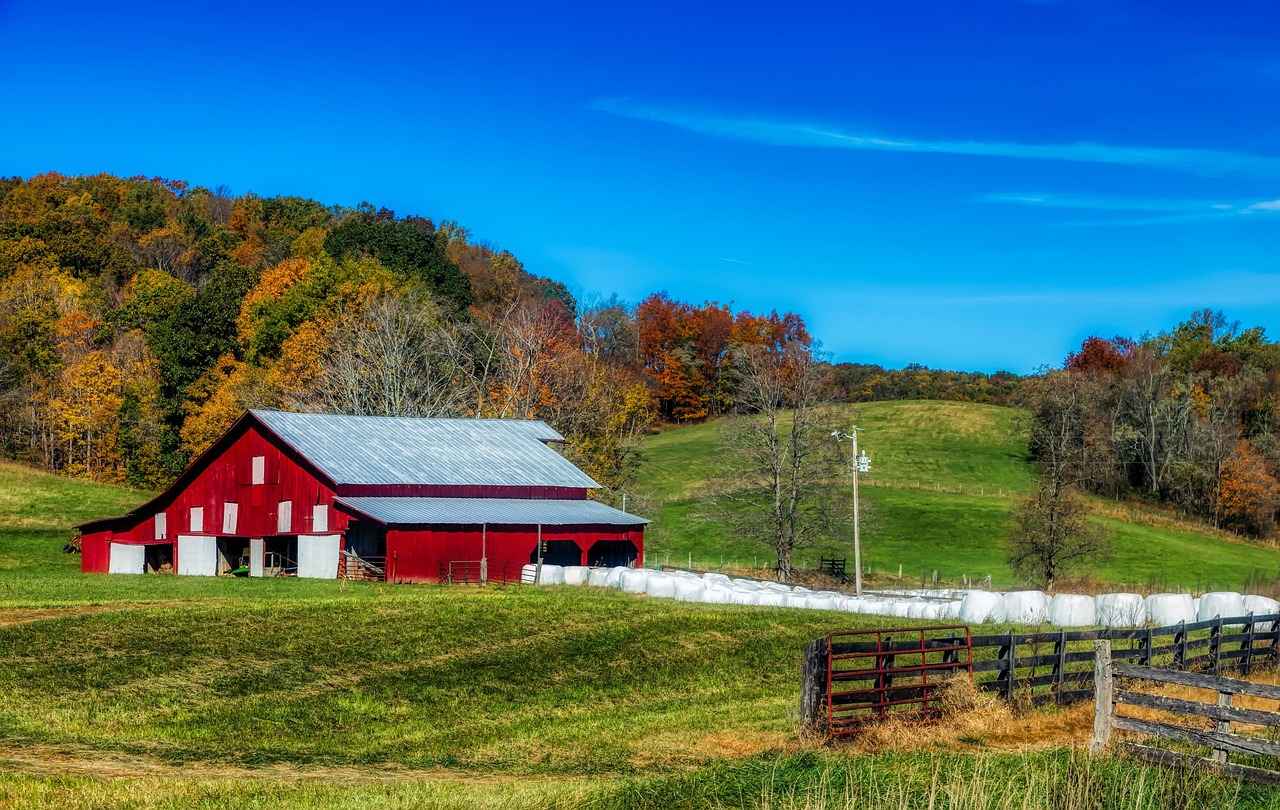
4. Neora Valley National Park
Neora Valley National Park is often regarded as one of the best-kept secrets of West Bengal. Nestled in the picturesque hills of Kalimpong, this park is a treasure trove of natural beauty and biodiversity. Its dense forests, vibrant flora, and diverse fauna make it an ideal destination for nature lovers and adventure seekers alike. The park spans over 88 square kilometers, providing ample space for exploration and discovery.
The lush landscapes of Neora Valley are characterized by towering trees, cascading streams, and a rich undergrowth that supports a variety of wildlife. The park is home to numerous trekking trails that wind through its scenic beauty, allowing visitors to immerse themselves in the tranquility of nature. These trails vary in difficulty, catering to both novice hikers and seasoned trekkers.
Neora Valley National Park is a biodiversity hotspot, hosting several rare and endangered species. Among its inhabitants are the elusive Red Panda, various species of orchids, and a multitude of bird species, making it a paradise for birdwatchers. The park’s unique ecosystem plays a critical role in maintaining the ecological balance of the region.
For those seeking adventure, Neora Valley offers a range of activities, including trekking, nature walks, and bird watching. Guided tours are available, providing insights into the park’s unique ecology and the importance of conservation efforts. Visitors can also enjoy the breathtaking views from various vantage points, making each trek a rewarding experience.
In conclusion, Neora Valley National Park is a must-visit destination for anyone looking to experience the untouched beauty of West Bengal. Its combination of stunning landscapes, rich biodiversity, and adventure opportunities makes it a perfect spot for eco-tourism. Whether you are a nature enthusiast, a wildlife lover, or simply seeking a peaceful retreat, Neora Valley promises an unforgettable experience.
Trekking Trails
in Neora Valley National Park provide an exhilarating experience for nature enthusiasts and adventure seekers alike. This park, often regarded as one of West Bengal’s hidden treasures, boasts a plethora of trekking routes that meander through its stunning landscapes.
The trekking routes here are diverse, catering to all levels of trekkers, from beginners to seasoned adventurers. Each trail offers a unique perspective of the park’s untouched beauty, with dense forests, vibrant flora, and a rich tapestry of wildlife. As you embark on these trails, you’ll find yourself surrounded by towering trees, chirping birds, and the occasional sighting of elusive wildlife.
- Beginner Trails: These routes are perfect for families and novice trekkers, providing gentle slopes and well-marked paths.
- Intermediate Trails: Designed for those with some trekking experience, these paths may include steeper inclines and more challenging terrain.
- Advanced Trails: For the seasoned trekker, these routes offer rigorous challenges, including rugged landscapes and longer distances.
One of the most popular trails is the Giddapahar Trek, which rewards trekkers with breathtaking panoramic views at its summit. Along the way, adventurers can encounter various species of birds and butterflies, making it a photographer’s paradise.
Furthermore, trekking in Neora Valley is not just about the physical challenge; it’s also an opportunity to immerse yourself in the rich biodiversity of the region. The park is home to several rare and endangered species, including the Red Panda and various orchids, which add to the allure of the trails.
In conclusion, the trekking trails in Neora Valley National Park are a must-visit for anyone looking to experience the natural beauty of West Bengal. Whether you seek adventure, tranquility, or a chance to connect with nature, these trails offer something for everyone.
Flora and Fauna
Neora Valley National Park, nestled in the majestic Himalayas, is a treasure trove of biodiversity. This park is not just a haven for nature lovers, but also a crucial sanctuary for numerous rare and endangered species. The unique climatic conditions and varied altitudes create a rich tapestry of habitats, making it an ideal location for both wildlife enthusiasts and researchers.
The park is home to over 200 species of birds, including the magnificent Great Himalayan Hornbill and the elusive Black Eagle. Birdwatchers flock here to catch glimpses of these avian wonders, while the dense forests provide shelter to various mammals such as the Red Panda, Clouded Leopard, and the Indian Bison.
In addition to its impressive fauna, Neora Valley boasts a rich variety of flora. The park’s forests are primarily composed of evergreen and deciduous trees, with species like Oak, Rhododendron, and Sal dominating the landscape. These trees not only support wildlife but also contribute to the ecological balance of the region.
Researchers and conservationists are drawn to Neora Valley for its exceptional biodiversity. Ongoing studies aim to monitor the health of various species and their habitats. This research is vital for implementing effective conservation strategies to protect these endangered species from threats such as habitat loss and climate change.
In conclusion, Neora Valley National Park stands out as a biodiversity hotspot, offering a unique opportunity to observe and study rare and endangered species. Its rich flora and fauna make it an invaluable asset for conservation efforts, providing insights into the delicate balance of ecosystems and the importance of preserving our natural heritage.

5. Kalimpong Eco Park
Kalimpong Eco Park is a stunning destination that seamlessly blends natural beauty with sustainable tourism practices. Nestled in the picturesque hills of Kalimpong, this park offers visitors a serene environment to immerse themselves in the local flora and fauna. It serves as a perfect getaway for nature enthusiasts and families alike, providing a tranquil escape from the hustle and bustle of city life.
The park features a variety of attractions that showcase the rich biodiversity of the region. One of the highlights is its beautifully landscaped botanical gardens, which display a wide range of native plants. These gardens not only enhance the visual appeal of the park but also serve as an educational resource for visitors interested in botany and conservation.
Community Involvement plays a significant role in the park’s operations. Local communities actively participate in eco-tourism initiatives, promoting sustainable practices that benefit both the environment and the local economy. Visitors can engage with local artisans and learn about traditional crafts, enhancing their experience through cultural exchanges.
For those seeking adventure, the park offers numerous walking trails that wind through lush greenery, providing opportunities for birdwatching and wildlife observation. The serene atmosphere makes it an ideal spot for picnics and leisurely strolls, allowing visitors to connect with nature.
In conclusion, Kalimpong Eco Park stands out as a must-visit destination for eco-tourism in West Bengal. Its commitment to sustainability, combined with its breathtaking landscapes and community engagement, makes it a unique place to explore and appreciate the natural world.
Botanical Gardens
are not just a feast for the eyes; they are vital centers for education and conservation. The Kalimpong Eco Park, for instance, features beautifully landscaped gardens that showcase a plethora of native plants. These gardens serve as a living museum, providing visitors with a unique opportunity to learn about the rich biodiversity of the region.
The gardens are meticulously designed to reflect the natural habitats of the local flora, allowing visitors to appreciate the beauty and complexity of these ecosystems. Each section of the garden is dedicated to different plant species, making it easier for botany enthusiasts to identify and understand the various types of vegetation.
- Educational Opportunities: Guided tours are offered to educate visitors about the importance of native plants and their roles in the ecosystem. These tours often include information on conservation efforts and the ecological significance of each plant.
- Research and Conservation: The gardens also function as research hubs where botanists study plant species and their interactions within the ecosystem. Ongoing conservation projects aim to protect endangered species and promote sustainable practices.
- Community Engagement: Local communities are involved in maintaining the gardens, fostering a sense of ownership and responsibility towards the environment. Workshops and events are regularly organized to engage the public and raise awareness about biodiversity.
In addition to their educational value, botanical gardens provide a serene environment for relaxation and reflection. Visitors can stroll through the pathways, enjoying the vibrant colors and fragrances of the flowers, making it a perfect spot for nature lovers and families alike.
In conclusion, the botanical gardens at Kalimpong Eco Park are a testament to the beauty of nature and the importance of conservation. They not only enhance the visitor experience but also play a crucial role in educating the public about the significance of native plants and preserving biodiversity for future generations.
Community Involvement
plays a pivotal role in the success of eco-tourism initiatives across various regions, particularly in places like West Bengal. Local communities engage actively, ensuring that tourism not only benefits visitors but also enhances their own cultural and economic landscapes.
By participating in eco-tourism, these communities promote sustainable practices that protect their environment while providing an authentic experience for tourists. This symbiotic relationship fosters a sense of ownership among locals, encouraging them to preserve their natural resources and cultural heritage.
| Benefits of Community Involvement | Examples of Initiatives |
|---|---|
| Enhances visitor experience through cultural exchanges | Workshops on traditional crafts and cooking |
| Promotes sustainable economic development | Community-run eco-lodges and guided tours |
| Encourages conservation of local flora and fauna | Wildlife monitoring and habitat restoration projects |
Moreover, local communities often share their knowledge about the region’s unique biodiversity and history, enriching the visitor’s understanding and appreciation of the area. For instance, in the Sundarbans, community members educate tourists about the mangrove ecosystem and the importance of protecting the Royal Bengal Tiger.
In addition to enhancing the visitor experience, community involvement in eco-tourism leads to improved living conditions for locals. With increased revenue from tourism, communities can invest in education, healthcare, and infrastructure, leading to a better quality of life.
Ultimately, the collaboration between local communities and eco-tourism not only promotes sustainable practices but also fosters a deeper connection between visitors and the environment. This approach ensures that both the natural surroundings and the cultural heritage of the region are preserved for future generations.
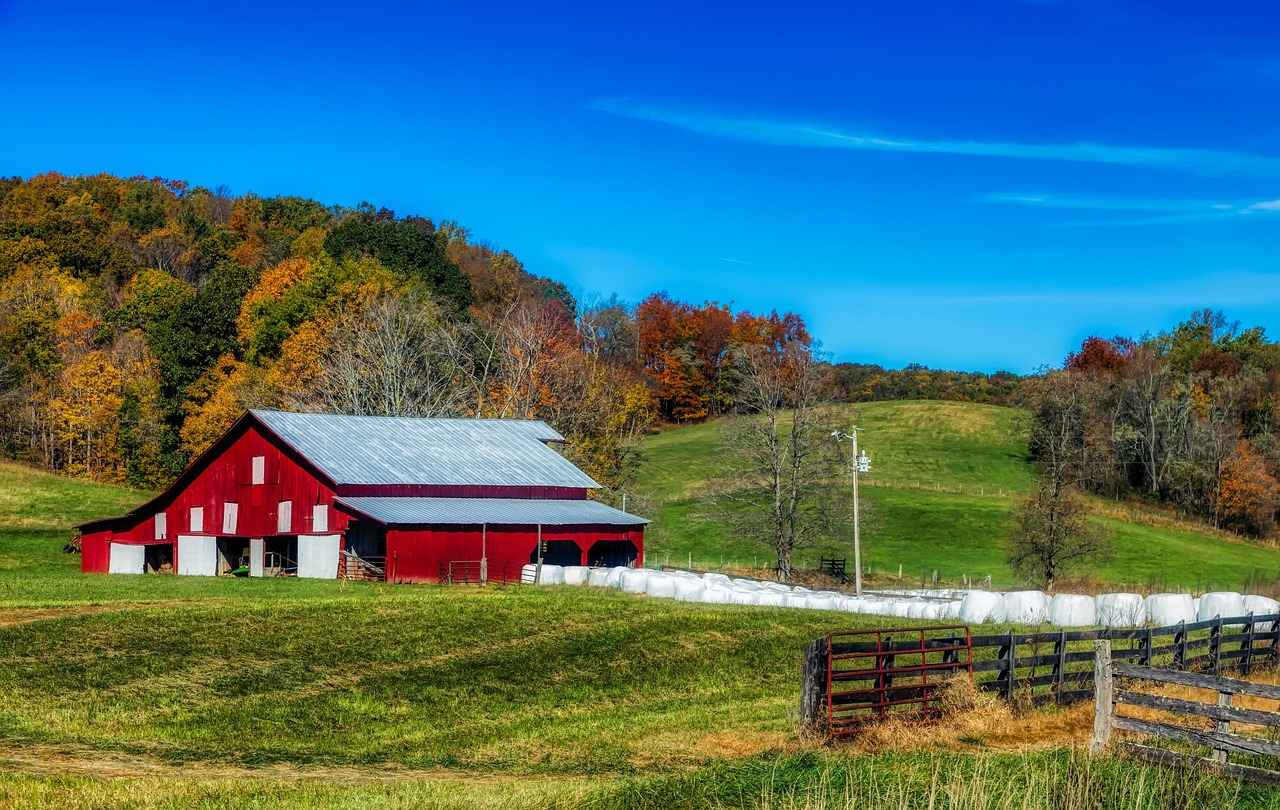
6. Jorpokhri Wildlife Sanctuary
Jorpokhri Wildlife Sanctuary is a tranquil haven for nature lovers, nestled in the heart of West Bengal. This sanctuary is not only renowned for its picturesque lake but also for its rich biodiversity, making it an ideal destination for those seeking peaceful retreats amidst nature.
The sanctuary spans over a sprawling area, featuring a stunning lake that serves as a vital ecosystem for various aquatic life and migratory birds. This lake is a significant ecological area, contributing to the conservation efforts in the region. Visitors can enjoy the serene environment while observing the diverse bird species that flock to the sanctuary, especially during the migratory season.
Nature Trails
- Jorpokhri Wildlife Sanctuary offers well-marked nature trails that allow visitors to explore the local flora and fauna. These trails are designed to enhance the overall experience, providing insights into the unique ecosystem.
- As you walk along these trails, you might encounter various species of plants and animals, making it a perfect spot for wildlife photography and nature enthusiasts.
Conservation Efforts
The sanctuary plays a crucial role in the conservation of endangered species and their habitats. Various initiatives are in place to ensure the protection of the local wildlife, making it a significant area for ecological research and education.
Visitor Experience
For those looking to unwind, Jorpokhri Wildlife Sanctuary offers a peaceful atmosphere, away from the hustle and bustle of city life. The combination of natural beauty and biodiversity makes it a perfect spot for eco-tourism, providing visitors with a chance to connect with nature in a meaningful way.
In conclusion, Jorpokhri Wildlife Sanctuary is a must-visit destination for anyone interested in exploring the natural beauty and biodiversity of West Bengal. Whether you’re a bird watcher, a nature lover, or simply seeking a peaceful retreat, this sanctuary offers a unique experience that is sure to leave a lasting impression.
Lake Ecosystem
The Jorpokhri Wildlife Sanctuary is renowned for its stunning lake, which serves as a vital ecosystem supporting a rich variety of aquatic life and migratory birds. This enchanting body of water plays a crucial role in maintaining the ecological balance of the area, making it a significant site for conservation efforts.
The lake is home to numerous species of fish, amphibians, and invertebrates, which contribute to the overall health of the aquatic ecosystem. Additionally, the surrounding wetlands provide essential habitats for various bird species, including both resident and migratory birds. During specific seasons, the lake attracts flocks of migratory birds, offering a spectacular sight for birdwatchers and nature enthusiasts.
- Significance of Aquatic Life: The diverse aquatic life found in the lake supports the food chain and plays a crucial role in nutrient cycling within the ecosystem.
- Migratory Birds: The sanctuary serves as a critical stopover for migratory birds, providing them with a safe resting place during their long journeys.
- Conservation Efforts: The ecological importance of the lake has led to various conservation initiatives aimed at preserving its natural beauty and biodiversity.
Visitors to the sanctuary can engage in activities such as birdwatching, photography, and nature walks along the well-maintained trails. These experiences not only enhance the understanding of the lake’s ecosystem but also foster a deeper appreciation for the necessity of conservation.
In conclusion, the lake within Jorpokhri Wildlife Sanctuary is more than just a picturesque spot; it is a thriving ecosystem that supports a myriad of life forms. Protecting this vital area is essential for sustaining its biodiversity and ensuring that future generations can enjoy its natural wonders.
Nature Trails
offer a unique opportunity for visitors to immerse themselves in the beauty of the natural world. In various eco-tourism spots across West Bengal, these well-marked trails not only provide a chance to explore stunning landscapes but also educate visitors about the local ecosystem and its diverse wildlife.
As you walk along these trails, you will encounter a variety of flora and fauna, each with its own role in maintaining ecological balance. The trails are designed to enhance your understanding of the environment, featuring informative signboards that detail the different species you may encounter. This educational aspect enriches your experience, turning a simple walk into an enlightening adventure.
For instance, in the Sundarbans National Park, the nature trails wind through mangrove forests, where you can spot unique wildlife such as the elusive Royal Bengal Tiger and various bird species. Similarly, the trails in Gorumara National Park lead you through lush grasslands and dense forests, where you might catch a glimpse of the Indian rhinoceros.
Benefits of Nature Trails:
- Educational Experience: Learn about local wildlife and plants.
- Physical Activity: Great for hiking and improving fitness.
- Mental Well-being: Nature walks are known to reduce stress and improve mood.
- Wildlife Observation: Opportunities to see animals in their natural habitat.
Moreover, these trails are often maintained by local communities, promoting sustainable tourism practices. By choosing to explore these pathways, visitors contribute to conservation efforts and support the livelihoods of the communities that protect these natural treasures.
In conclusion, the nature trails in West Bengal are not just pathways through the wilderness; they are gateways to understanding and appreciating the intricate web of life that exists within these ecosystems. So, lace up your hiking boots and get ready for an unforgettable journey through nature!

7. Dooars Region
The Dooars region is a captivating destination in West Bengal, renowned for its breathtaking landscapes and rich biodiversity. It serves as a gateway to the majestic Himalayas and is characterized by its lush tea gardens and dense forests. This area not only offers stunning natural beauty but also provides a unique blend of eco-tourism and cultural experiences that attract nature lovers and adventure seekers alike.
One of the most striking features of the Dooars region is its extensive tea gardens. Visitors can embark on guided tours through these picturesque plantations, where they can learn about the intricate process of tea production, from plucking the leaves to brewing the perfect cup. The scenic views of rolling hills adorned with tea bushes create an idyllic backdrop for photography enthusiasts.
In addition to its natural allure, the Dooars region is rich in cultural heritage. Tourists have the opportunity to engage with local communities, gaining insights into their traditional customs and lifestyles. Participating in local festivals, tasting authentic cuisine, and exploring traditional crafts can greatly enhance the eco-tourism experience, fostering a deeper connection with the land and its people.
The Dooars is also a biodiversity hotspot, home to several wildlife sanctuaries and national parks. Nature enthusiasts can explore well-marked trails that wind through dense forests, offering chances to spot various species of flora and fauna. The region is particularly known for its elephant and bird populations, making it a paradise for wildlife photographers and bird watchers.
In summary, the Dooars region stands out as a premier eco-tourism destination in West Bengal. Its combination of stunning tea gardens, rich cultural experiences, and abundant wildlife makes it a perfect getaway for those seeking adventure and tranquility. Whether you’re sipping tea amidst the hills or exploring the vibrant local culture, the Dooars promises an unforgettable experience.
Tea Garden Tours
are a delightful way to immerse oneself in the rich culture and breathtaking landscapes of the Dooars region in West Bengal. These tours offer visitors a unique opportunity to explore the mesmerizing tea gardens while gaining insights into the intricate process of tea production.
As you wander through the lush, rolling hills adorned with vibrant green tea plants, you’ll be captivated by the scenic beauty that surrounds you. The air is filled with the fresh aroma of tea leaves, and the sound of leaves rustling in the gentle breeze creates a serene atmosphere perfect for relaxation and reflection.
During these tours, knowledgeable guides share their expertise on tea cultivation, explaining the various stages of tea production, from planting to harvesting. Visitors can witness the skilled hands of tea pickers as they expertly pluck the tender leaves, a practice that has been passed down through generations. This immersive experience not only enhances your understanding of tea but also supports the local economy by promoting sustainable practices.
Moreover, the tours often include opportunities for tasting sessions, where guests can savor different varieties of tea, each with its unique flavor profile. This is a perfect chance to discover your favorite brew while enjoying the stunning vistas of the surrounding landscape.
In addition to the educational aspect, the tea gardens offer numerous spots for photography. The vibrant colors and picturesque scenery create an ideal backdrop for capturing memories. Whether you’re an avid photographer or just looking to document your travels, the tea gardens provide endless opportunities for stunning shots.
Overall, in the Dooars region are not just about exploring tea production; they are about experiencing the harmony between nature and culture. With breathtaking views, rich traditions, and a commitment to sustainability, these tours are a must for anyone visiting West Bengal.
Cultural Experiences
play a vital role in enhancing the eco-tourism experience in West Bengal. By engaging with local communities, visitors gain invaluable insights into the rich tapestry of customs and traditions that define the region. This engagement not only enriches the travel experience but also fosters a deeper understanding of the local way of life.
When tourists immerse themselves in the daily lives of local residents, they have the opportunity to participate in traditional festivals, culinary experiences, and artisanal crafts. These interactions allow travelers to appreciate the unique cultural heritage of West Bengal, characterized by its vibrant art forms, music, and dance.
- Festivals: Visitors can join in local celebrations such as Durga Puja, where the community comes together to honor the goddess with elaborate decorations and rituals.
- Culinary Tours: Sampling authentic Bengali cuisine, including dishes like shorshe ilish (hilsa fish in mustard sauce) and mishti doi (sweetened yogurt), offers a delicious glimpse into the region’s culinary traditions.
- Artisan Workshops: Engaging in craft workshops, such as pottery or weaving, allows tourists to learn directly from skilled artisans while supporting local economies.
Moreover, these cultural exchanges help promote sustainable tourism practices. By supporting local artisans and participating in community-led initiatives, tourists contribute to the preservation of cultural heritage and the environment. This symbiotic relationship between visitors and local communities ensures that tourism benefits everyone involved.
In conclusion, the interaction with local communities in West Bengal significantly enhances the eco-tourism experience. It provides travelers with a deeper appreciation of the region’s customs and traditions, making their journey not only memorable but also meaningful. As eco-tourism continues to grow, fostering these connections will be crucial for both preserving cultural heritage and promoting sustainable practices.

8. Chandraketugarh
Chandraketugarh is an archaeological site located in the heart of West Bengal, blending rich history with eco-tourism, making it a fascinating destination for visitors. This ancient site, once a thriving urban center, offers a glimpse into the region’s past while promoting sustainable tourism practices.
The historical importance of Chandraketugarh cannot be overstated. It is believed to date back to the 3rd century BCE and was a significant hub for trade and culture during ancient times. The site showcases numerous archaeological finds, including pottery, terracotta figurines, and coins, which highlight the area’s vibrant history. These artifacts not only attract history enthusiasts but also provide valuable insights into the ancient lifestyles of the people who inhabited the region.
Chandraketugarh is committed to promoting eco-tourism through various local initiatives aimed at preserving its ecological and historical significance. Visitors can engage in guided tours that emphasize responsible tourism, allowing them to appreciate the natural beauty while learning about the site’s heritage. These initiatives ensure that the cultural integrity of the area is maintained for future generations.
- Guided Tours: Expert guides provide in-depth knowledge about the archaeological findings and the historical context of Chandraketugarh.
- Nature Walks: The surrounding landscapes offer serene walking paths, allowing visitors to immerse themselves in the local flora and fauna.
- Cultural Events: Local festivals and events are held periodically, giving visitors a chance to experience the vibrant culture of the region.
In summary, Chandraketugarh is not just an archaeological site but a vital part of West Bengal’s cultural heritage. By combining history with eco-tourism, it provides a unique opportunity for visitors to explore the past while appreciating the natural environment. This makes it a must-visit destination for anyone interested in history, culture, and sustainable tourism.
Historical Significance
The site of Chandraketugarh is a treasure trove of historical significance, offering a glimpse into the rich tapestry of West Bengal’s past. This ancient archaeological site, located near the banks of the Ganges, showcases remnants of a vibrant civilization that thrived centuries ago. The ruins and artifacts found here not only attract history enthusiasts but also serve as a vital link to understanding the region’s cultural evolution.
The excavation at Chandraketugarh has revealed a variety of ancient structures, pottery, and tools, which provide insight into the daily lives of its inhabitants. These findings suggest that the site was once a bustling trade center, facilitating commerce and cultural exchange between different regions. The artifacts, including terracotta figurines and coins, are crucial for researchers studying the socio-economic dynamics of ancient Bengal.
Moreover, the site’s strategic location has made it a focal point for various empires throughout history, including the Mauryas and the Guptas. This historical continuity adds layers of significance to the site, making it a point of interest for both local and international tourists.
In recent years, local initiatives have emerged to promote sustainable tourism at Chandraketugarh. These efforts aim to preserve the site’s ecological and historical integrity while providing educational experiences for visitors. By engaging with the local community, tourists can gain a deeper understanding of the region’s heritage and the importance of preserving these ancient ruins for future generations.
In conclusion, Chandraketugarh stands as a testament to the rich historical legacy of West Bengal. Its ancient ruins and artifacts offer invaluable insights into the past, making it a must-visit destination for anyone interested in history and archaeology.
Eco-Tourism Initiatives
play a crucial role in promoting sustainable tourism, ensuring that local ecosystems and cultural heritage are preserved for future generations. These initiatives are not only vital for environmental conservation but also for enhancing the livelihoods of local communities. By engaging in eco-tourism, travelers can contribute to the preservation of nature while enjoying unique experiences that celebrate local traditions.
In many regions, local communities are spearheading efforts to create eco-friendly tourism practices that highlight their natural and cultural assets. For instance, in the Sundarbans, local fishermen have adopted sustainable fishing techniques that protect aquatic life while allowing them to earn a livelihood. This practice not only benefits the environment but also educates tourists about the importance of sustainable resource management.
- Community Engagement: Local initiatives often involve community members in the planning and execution of eco-tourism projects, ensuring that the benefits of tourism are shared among residents.
- Conservation Projects: Many eco-tourism programs include conservation efforts, such as reforestation and wildlife protection, which help maintain biodiversity and ecological balance.
- Cultural Preservation: Eco-tourism initiatives often focus on preserving local traditions, crafts, and cuisines, providing visitors with authentic cultural experiences while supporting local artisans.
Moreover, educational programs are frequently incorporated into eco-tourism initiatives. These programs aim to raise awareness among visitors about environmental issues and the importance of sustainable practices. Tourists often participate in workshops that teach them about local flora and fauna, as well as the ecological significance of the areas they are visiting.
In conclusion, are essential for fostering a sustainable tourism model that benefits both the environment and local communities. By supporting these initiatives, travelers can help ensure that the ecological and historical significance of these areas is preserved for generations to come.

9. Sunderbans Eco Village
Sunderbans Eco Village is a remarkable destination that seamlessly integrates eco-tourism with the rich cultural heritage of the Sundarbans community. This village offers an immersive experience where visitors can engage with the local lifestyle while enjoying the stunning natural beauty of the region.
One of the key attractions of Sunderbans Eco Village is its commitment to sustainable tourism. The village promotes responsible practices that ensure the local community benefits from the influx of tourists. By staying in eco-friendly accommodations and participating in community-led activities, visitors contribute to the preservation of both the environment and the local culture.
Visitors to Sunderbans Eco Village can participate in various cultural workshops that showcase traditional crafts, cooking, and fishing techniques. These workshops not only provide hands-on experiences but also foster a deeper understanding of the local customs and traditions. Engaging with local artisans and fishermen allows tourists to appreciate the skills and knowledge passed down through generations.
The eco-village is surrounded by the breathtaking beauty of the Sundarbans mangrove forests, which are home to diverse wildlife, including the elusive Royal Bengal Tiger. Guided nature walks and boat tours offer opportunities to explore the unique ecosystem while learning about its importance in global biodiversity. Visitors can witness the intricate balance of life in this UNESCO World Heritage Site, making it a perfect spot for nature enthusiasts.
By choosing to visit Sunderbans Eco Village, tourists play a vital role in supporting the local economy. The revenue generated from eco-tourism helps fund community projects, education, and conservation efforts. This approach not only enhances the visitor experience but also ensures that the local culture and environment are preserved for future generations.
In conclusion, Sunderbans Eco Village offers a unique and enriching experience that combines eco-tourism with cultural immersion. It stands as a model for sustainable tourism, allowing visitors to connect with the natural world while supporting the local community. A visit to this eco-village is not just a getaway; it is an opportunity to contribute positively to the environment and the lives of the people who call the Sundarbans home.
Community-Based Tourism
has emerged as a crucial aspect of sustainable travel, particularly in regions rich in culture and biodiversity. This approach not only enhances the visitor experience but also ensures that local communities reap tangible benefits from tourism activities. By focusing on responsible tourism practices, destinations can create a win-win situation for both visitors and residents.
In many areas, tourism can lead to economic growth, but it often comes at the expense of local culture and environment. However, community-based tourism aims to shift this paradigm. It emphasizes the importance of involving local communities in planning and decision-making processes. This engagement allows for the preservation of cultural heritage while providing visitors with authentic experiences.
- Direct Economic Benefits: Community-based tourism initiatives often allocate a portion of the profits directly to local families and businesses. This helps in improving their standard of living and encourages the preservation of local traditions.
- Environmental Conservation: When communities are actively involved in tourism, they are more likely to protect their natural resources. This leads to better conservation practices and sustainable use of local ecosystems.
- Cultural Exchange: Visitors have the opportunity to interact with local residents, learn about their customs, and participate in traditional activities. This cultural exchange fosters mutual respect and understanding.
Moreover, successful community-based tourism initiatives often include educational components, where visitors can learn about local conservation efforts and the significance of preserving cultural heritage. Workshops on traditional crafts, cooking, and farming techniques not only enhance the visitor experience but also empower local artisans and farmers.
In conclusion, community-based tourism stands as a viable model for sustainable travel, ensuring that local communities benefit from the influx of visitors. By prioritizing responsible practices and fostering cultural exchange, both tourists and locals can enjoy a richer, more meaningful experience.
Cultural Workshops
in the Sunderbans Eco Village offer visitors a unique opportunity to immerse themselves in the vibrant traditions and practices of the local community. These workshops are designed to provide a hands-on experience, allowing participants to engage directly with the rich cultural heritage of the region.
Visitors can participate in a variety of activities, each highlighting different aspects of traditional life. For instance, workshops on craftsmanship allow guests to learn about local artisanship, where they can create their own handmade souvenirs using techniques passed down through generations. This not only fosters a deeper appreciation for the skills involved but also supports the local economy by promoting artisanal crafts.
In addition to crafts, the culinary workshops are particularly popular. Here, participants can delve into the culinary heritage of the Sundarbans, learning to prepare traditional dishes using local ingredients. This experience is not just about cooking; it is an exploration of the flavors, spices, and cooking methods that define the region’s cuisine, providing a delicious way to connect with the culture.
Fishing techniques are another highlight of the workshops. Guided by local fishermen, visitors can learn about sustainable fishing practices that have been used for centuries. This not only enhances their understanding of the local ecosystem but also emphasizes the importance of preserving these traditional methods in the face of modern challenges.
Overall, these workshops are designed to be interactive and educational, ensuring that visitors leave with a newfound respect for the local culture and its practices. By participating in these activities, guests contribute to the preservation of cultural traditions while also gaining valuable insights into the lives of the people who call the Sunderbans home.

10. Mirik Lake
Mirik Lake is a hidden jewel nestled in the hills of West Bengal, offering a tranquil escape for those seeking peace and natural beauty. This picturesque lake is surrounded by lush green hills and sprawling tea gardens, making it an ideal destination for relaxation and rejuvenation.
Visitors to Mirik Lake can immerse themselves in the serene environment, where the gentle sounds of nature create a perfect backdrop for unwinding. The lake, with its crystal-clear waters, is not only a visual delight but also a hub for various recreational activities.
One of the most popular activities at Mirik Lake is boating. Tourists can rent paddle boats or rowboats to glide across the calm waters, providing a unique perspective of the surrounding landscape. The experience of floating on the lake while enjoying the cool breeze is truly unforgettable.
The area around Mirik Lake is rich in biodiversity. Nature enthusiasts can explore the surrounding forests, which are home to a variety of plant species and wildlife. The vibrant flora offers excellent opportunities for photography and nature walks, allowing visitors to connect with the environment.
Mirik is also famous for its expansive tea gardens. A visit to these gardens provides insight into the tea-making process and offers a chance to sample some of the finest teas in the region. Visitors can take guided tours through the plantations, learning about the cultivation and processing of tea.
For those wishing to extend their stay, there are several accommodation options available, ranging from cozy guesthouses to luxurious hotels. Many of these establishments focus on eco-friendly practices, ensuring that your stay is both comfortable and sustainable.
In conclusion, Mirik Lake is not just a destination; it is an experience that rejuvenates the soul and reconnects visitors with nature. Whether you are looking to relax, explore, or learn about local culture, Mirik Lake offers a perfect blend of activities and scenic beauty that make it a must-visit location in West Bengal.
Boating Activities
at Mirik Lake offer a unique opportunity to immerse oneself in the tranquil beauty of nature. Nestled in the picturesque hills of West Bengal, this serene lake is surrounded by lush tea gardens and vibrant flora, making it a perfect getaway for those seeking peace and relaxation.
Visitors can enjoy a variety of boating options, including rowboats and pedal boats, allowing everyone to choose their preferred way to glide across the calm waters. As you paddle through the lake, you will be treated to stunning views of the surrounding hills and the rich biodiversity that thrives in this area. The gentle lapping of water against the boat creates a soothing ambiance, making it an ideal setting for a romantic outing or a family day out.
Moreover, the lake is home to a variety of aquatic life and migratory birds, providing excellent opportunities for birdwatching enthusiasts. As you navigate the waters, keep an eye out for local species that call this beautiful ecosystem home. The experience of being on the water not only enhances your appreciation of nature but also allows for a deeper connection with the environment.
For those interested in a more immersive experience, guided boating tours are available. These tours often include informative commentary about the local ecology, ensuring that visitors leave with a greater understanding of the area’s environmental significance. Additionally, the peaceful atmosphere of Mirik Lake makes it an excellent spot for photography, allowing you to capture the stunning landscapes and vibrant sunsets.
In conclusion, boating at Mirik Lake is more than just an activity; it’s an experience that connects you with the natural beauty of West Bengal. Whether you are looking to relax, explore, or learn, the lake provides a perfect backdrop for a memorable outing.
Local Flora
around Mirik Lake is a vibrant testament to the region’s rich biodiversity. This area is characterized by a variety of plant species, making it a haven for nature enthusiasts and photographers alike. The lush landscape surrounding the lake provides a picturesque backdrop for leisurely nature walks, where visitors can immerse themselves in the serene environment.
The diverse plant life includes towering trees, vibrant wildflowers, and unique shrubs that contribute to the ecological balance of the area. Among these, you can find species such as rhododendrons, which bloom in stunning colors during the spring, attracting both tourists and local wildlife.
- Rhododendron: Known for its beautiful clusters of flowers, this plant thrives in the cooler climate around Mirik Lake.
- Bamboo Groves: These provide shelter for various bird species and contribute to the local ecosystem.
- Medicinal Plants: The area is also home to several plants used in traditional medicine, showcasing the cultural significance of the local flora.
Photography enthusiasts will find endless opportunities to capture the stunning vistas and intricate details of the flora. The interplay of light and shadow among the trees, along with the reflection of the plants in the lake, creates a magical atmosphere that is perfect for capturing memorable images.
Moreover, the ecological diversity around Mirik Lake is crucial for maintaining the habitat for various animals and insects, making it an important area for conservation efforts. Visitors are encouraged to respect the natural environment during their explorations, ensuring that this beautiful ecosystem remains intact for future generations.
In conclusion, the local flora around Mirik Lake not only enhances the natural beauty of the area but also provides significant ecological benefits. Whether you are a nature lover, a photographer, or simply seeking tranquility, this rich tapestry of plant life offers a unique and rewarding experience.

11. Lataguri
Lataguri is not just a quaint village; it serves as a vital gateway to Gorumara National Park, making it an essential stop for eco-tourism enthusiasts and wildlife lovers alike. Nestled in the heart of the Dooars region, Lataguri offers an incredible opportunity to explore the lush landscapes and rich biodiversity that West Bengal has to offer.
As visitors arrive in Lataguri, they are greeted by a vibrant atmosphere filled with the sounds of nature. The village is strategically located, providing easy access to eco-tourism activities, including jeep safaris, nature walks, and bird watching. These activities allow tourists to immerse themselves in the stunning natural beauty and observe the diverse wildlife that inhabits the region.
One of the main attractions of Lataguri is its proximity to Gorumara National Park, which is renowned for its population of the Indian rhinoceros and other exotic wildlife. Visitors can take guided tours to enhance their wildlife spotting experience. The park is a sanctuary for various animals, including elephants, deer, and a multitude of bird species, making it a paradise for wildlife enthusiasts.
Lataguri provides a range of eco-friendly accommodations that cater to different budgets, ensuring that visitors can enjoy a comfortable stay while supporting sustainable tourism practices. Many of these lodgings are designed to blend seamlessly with the surrounding environment, allowing guests to enjoy the tranquility of nature.
In addition to its natural attractions, Lataguri offers visitors a glimpse into the local culture. Engaging with the community through cultural programs and workshops enhances the overall experience, allowing tourists to learn about traditional crafts and local customs.
In conclusion, Lataguri is more than just a stopover; it is a vibrant hub for eco-tourism that offers a unique blend of wildlife experiences, cultural engagement, and sustainable practices. Whether you are an adventure seeker or a nature lover, Lataguri is a destination that promises unforgettable memories.
Accommodation Options
When exploring the stunning landscapes and rich biodiversity of West Bengal, finding the right place to stay is essential for a fulfilling experience. A variety of eco-friendly accommodations are available, ensuring a comfortable stay while promoting sustainable tourism practices. These accommodations not only offer modern amenities but also integrate environmentally conscious practices that benefit both guests and the local community.
- Eco-Resorts: Many eco-resorts in the region offer luxurious stays surrounded by nature. These resorts often use sustainable materials in their construction and operate on renewable energy sources. Guests can enjoy organic meals prepared from locally sourced ingredients.
- Homestays: Staying with local families provides a unique insight into the culture and traditions of West Bengal. Homestays often emphasize sustainability by using eco-friendly practices, such as rainwater harvesting and waste recycling.
- Camping Sites: For the adventurous traveler, camping in designated eco-friendly sites allows for immersive experiences in nature. These sites are often located near national parks, providing easy access to wildlife viewing and trekking opportunities.
- Tree Houses: Some accommodations offer tree house stays, allowing guests to experience the thrill of sleeping among the trees while minimizing their impact on the environment. These unique lodgings often provide stunning views of the surrounding landscape.
Choosing eco-friendly accommodations not only enhances your travel experience but also supports the local economy and conservation efforts. By opting for these sustainable options, visitors contribute to the preservation of West Bengal’s natural beauty and cultural heritage.
In conclusion, the variety of eco-friendly accommodations available in West Bengal ensures that travelers can enjoy a comfortable and responsible stay, making their eco-tourism experience both memorable and impactful.
Wildlife Spotting
in Lataguri offers an unparalleled experience for nature enthusiasts and wildlife lovers alike. Nestled on the fringes of the stunning Gorumara National Park, Lataguri serves as a prime base for exploring the rich biodiversity of the region. With its lush landscapes and abundant wildlife, the area is a haven for those seeking to immerse themselves in nature.
One of the key attractions of Lataguri is the variety of guided tours available, which enhance the wildlife spotting experience. These tours are led by knowledgeable local guides who are well-versed in the habits and habitats of the local fauna. They provide valuable insights into the ecosystem, ensuring that visitors not only see the wildlife but also understand their behaviors and the importance of conservation efforts.
- Safari Options: Jeep safaris are a popular choice, allowing visitors to cover larger areas of the park while spotting animals like the Indian rhinoceros, elephants, and various deer species.
- Bird Watching: For bird enthusiasts, Lataguri offers exceptional opportunities to observe numerous bird species in their natural habitat, including migratory birds during the winter months.
- Nature Walks: Guided nature walks provide a more intimate experience, allowing visitors to explore the flora and fauna up close while learning about the ecological balance of the region.
Moreover, the eco-friendly accommodations in Lataguri ensure that visitors can enjoy their stay while minimizing their environmental impact. Many lodges and resorts are designed to blend seamlessly with the natural surroundings, offering comfortable amenities without disturbing the local wildlife.
In conclusion, Lataguri is not just a gateway to Gorumara National Park but a destination rich in wildlife experiences. Whether you are a seasoned wildlife photographer or just someone looking to appreciate the beauty of nature, Lataguri promises unforgettable moments in the heart of West Bengal’s wilderness.

12. Bibhuti Bhushan Wildlife Sanctuary
Bibhuti Bhushan Wildlife Sanctuary is a hidden treasure in West Bengal, often overshadowed by more famous national parks. This sanctuary is not just a place for wildlife; it is a sanctuary for the soul, offering pristine landscapes and a rich tapestry of biodiversity that makes it a haven for eco-tourism enthusiasts.
Spanning over 150 square kilometers, Bibhuti Bhushan Wildlife Sanctuary is characterized by its lush green forests, serene water bodies, and diverse wildlife. The sanctuary is home to a variety of species, including the elusive Indian elephant, the majestic leopard, and numerous bird species, making it a paradise for wildlife photographers and bird watchers alike.
- Flora and Fauna: The sanctuary boasts a rich variety of flora, including tropical and subtropical trees, which provide habitat for its diverse fauna. Visitors can expect to see a wide range of plants, from towering trees to colorful wildflowers.
- Conservation Initiatives: The sanctuary plays a crucial role in wildlife conservation, with ongoing efforts to protect endangered species and their habitats. Educational programs are held to raise awareness about the importance of preserving this ecological gem.
- Visitor Experience: Guided tours are available, allowing visitors to explore the sanctuary’s hidden trails and learn about its unique ecosystems. These tours are not only informative but also provide a chance to connect with nature.
The sanctuary’s tranquil environment makes it an ideal spot for those looking to escape the hustle and bustle of city life. Whether you are a nature lover, a photographer, or simply seeking solitude, Bibhuti Bhushan Wildlife Sanctuary offers an immersive experience that rejuvenates the mind and spirit.
In conclusion, Bibhuti Bhushan Wildlife Sanctuary is not just a destination; it is an experience that embodies the essence of eco-tourism. It invites visitors to appreciate the beauty of nature while promoting conservation efforts that ensure its preservation for future generations.
Conservation Efforts
are crucial in maintaining the delicate balance of our ecosystems, particularly in wildlife sanctuaries. These sanctuaries serve as safe havens for endangered species and play an essential role in preserving biodiversity. Through various initiatives, these conservation efforts aim to protect not only the animals but also their habitats, ensuring that future generations can appreciate the beauty of nature.
One of the primary goals of conservation efforts in wildlife sanctuaries is to rehabilitate endangered species. This involves breeding programs, habitat restoration, and, in some cases, reintroduction into the wild. For instance, the successful breeding of the Indian rhinoceros in Gorumara National Park has significantly increased its population, highlighting the effectiveness of such initiatives.
Moreover, these sanctuaries often engage in community education and outreach programs. By involving local communities, sanctuaries foster a sense of ownership and responsibility towards wildlife conservation. Educational workshops and volunteer programs encourage community members to participate actively in conservation activities, promoting sustainable practices and reducing human-wildlife conflict.
| Conservation Initiative | Description |
|---|---|
| Habitat Restoration | Efforts to restore and rehabilitate natural habitats that have been degraded or destroyed. |
| Breeding Programs | Controlled breeding of endangered species to increase their population. |
| Community Engagement | Involving local communities in conservation efforts to ensure sustainable practices. |
In addition to these initiatives, wildlife sanctuaries often collaborate with international organizations to enhance their conservation strategies. This global cooperation allows for the sharing of knowledge, resources, and best practices, amplifying the impact of local efforts on a broader scale.
In conclusion, the in wildlife sanctuaries are vital for protecting endangered species and their habitats. Through a combination of breeding programs, community involvement, and international collaboration, these initiatives contribute significantly to the preservation of biodiversity. It is essential for all of us to support these efforts, ensuring that our planet remains a thriving home for all living beings.
Visitor Engagement
is a crucial aspect of eco-tourism that not only enhances the visitor experience but also promotes conservation and education about the environment. In regions like West Bengal, where ecological diversity is rich and varied, engaging visitors through educational programs and guided tours plays a significant role in fostering a deeper understanding of the area’s ecological significance.
These programs are designed to immerse visitors in the local ecosystem, allowing them to appreciate the intricate relationships between different species and their habitats. For instance, guided tours through the Sundarbans National Park provide insights into the unique mangrove forests and the diverse wildlife that inhabits them, including the majestic Royal Bengal Tiger. By participating in these tours, visitors gain firsthand knowledge about conservation efforts aimed at protecting these vital ecosystems.
Moreover, educational workshops often accompany these tours, where experts share valuable information about the region’s flora and fauna, highlighting the importance of biodiversity. Visitors learn about the various conservation initiatives in place and how they can contribute to preserving these natural wonders. This not only enriches their experience but also instills a sense of responsibility towards environmental stewardship.
In addition, community involvement in these programs enhances the visitor experience. Local guides, often from the communities surrounding these eco-tourism spots, share their cultural heritage and traditional ecological knowledge. This interaction not only supports local economies but also fosters a greater appreciation for the region’s cultural and ecological diversity.
Ultimately, through educational programs and guided tours is essential for promoting sustainable tourism. It ensures that visitors leave with a deeper understanding of the ecological significance of the region and the importance of conservation efforts, creating a lasting impact that benefits both the environment and local communities.
Frequently Asked Questions
- What is eco-tourism?
Eco-tourism is a responsible travel approach that focuses on visiting natural areas while conserving the environment and improving the well-being of local communities. It emphasizes sustainable practices and aims to minimize the impact on nature.
- Why should I visit eco-tourism spots in West Bengal?
West Bengal is home to breathtaking landscapes, rich biodiversity, and unique cultural experiences. Visiting eco-tourism spots allows you to enjoy nature while supporting conservation efforts and local communities, making your trip both enjoyable and meaningful.
- Are there any specific activities I can do at these eco-tourism destinations?
Absolutely! You can engage in a variety of activities such as trekking, bird watching, jeep safaris, and cultural workshops. Each destination offers unique experiences that let you connect with nature and local traditions.
- How can I ensure my visit is eco-friendly?
To ensure your visit is eco-friendly, choose sustainable accommodations, respect local wildlife, avoid littering, and participate in community-based tourism initiatives. Small actions can make a big difference in preserving these beautiful spots.
- What is the best time to visit eco-tourism spots in West Bengal?
The ideal time to visit is typically between October and March when the weather is pleasant and wildlife is more active. However, each destination may have its peak seasons, so it’s best to check before planning your trip.
